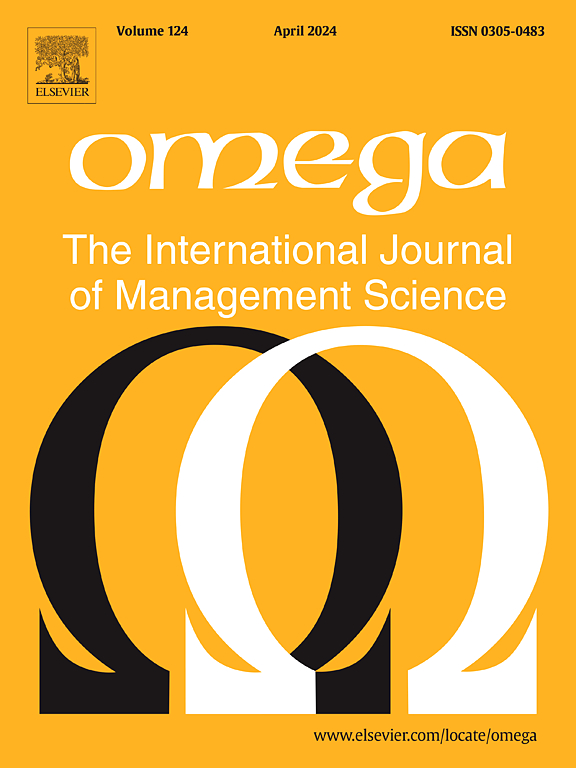Strategic buyer stockpiling in supply chains under uncertain product availability and price fluctuation
IF 6.7
2区 管理学
Q1 MANAGEMENT
Omega-international Journal of Management Science
Pub Date : 2025-01-27
DOI:10.1016/j.omega.2025.103283
引用次数: 0
Abstract
Due to concerns about potential product shortages and price increases from an unforeseen production disruption of uncertain length, strategic buyers might decide to stockpile extra products. Such stockpiling behavior could amplify the disruption-induced imbalance between demand and supply, leading to new stockpiling-driven shortages. This paper studies the interaction between product shortages and stockpiling behavior, and the identification and optimization of such stockpiling behavior. Firstly, considering both strategic and non-strategic buyers, the forecasting of stockpiling-driven product shortage is analyzed. Then, by maximizing the perceived value of hoarding for strategic buyers, a stockpiling time model and strategies are proposed. The stockpiling-driven shortages fall into three patterns, mainly depending on the proportion of strategic buyers in the market, the intensity and duration of production interruption, and the product availability linked to the uninterrupted manufacturer. The optimal stockpiling strategy may appear in five scenarios, i.e., “stockpiling at the beginning of disruption”, “stockpiling before the product price rises”,“stockpiling when the product price rises”, “stockpiling after the product price rises”, and “non-stockpiling”. The decision mainly depends on the trade-off between the determined inventory holding cost at the present stage and the uncertain future loss caused by price increases and stock-outs. To be specific, inventory holding cost, the length of product shortages triggered by strategic buyers’ dynamic stockpiling behavior, and the shortfall level in real-time production linked with buyer composition, disruption intensity, and manufacturer's capability.
求助全文
约1分钟内获得全文
求助全文
来源期刊

Omega-international Journal of Management Science
管理科学-运筹学与管理科学
CiteScore
13.80
自引率
11.60%
发文量
130
审稿时长
56 days
期刊介绍:
Omega reports on developments in management, including the latest research results and applications. Original contributions and review articles describe the state of the art in specific fields or functions of management, while there are shorter critical assessments of particular management techniques. Other features of the journal are the "Memoranda" section for short communications and "Feedback", a correspondence column. Omega is both stimulating reading and an important source for practising managers, specialists in management services, operational research workers and management scientists, management consultants, academics, students and research personnel throughout the world. The material published is of high quality and relevance, written in a manner which makes it accessible to all of this wide-ranging readership. Preference will be given to papers with implications to the practice of management. Submissions of purely theoretical papers are discouraged. The review of material for publication in the journal reflects this aim.
 求助内容:
求助内容: 应助结果提醒方式:
应助结果提醒方式:


